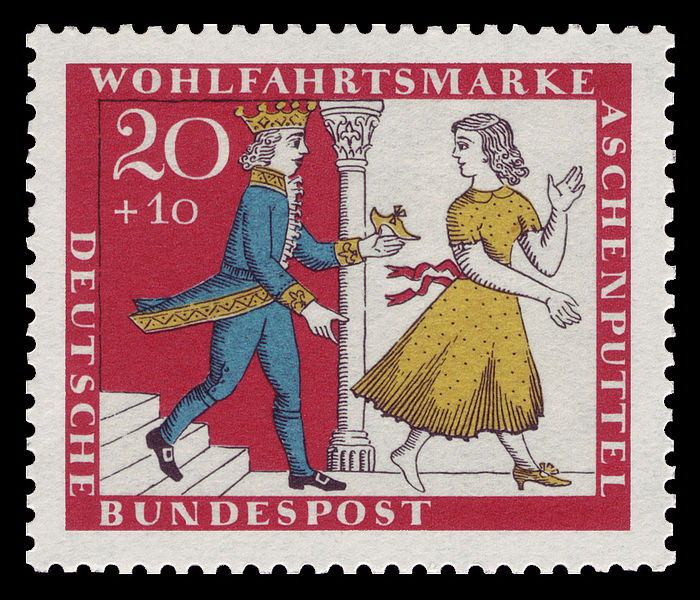
Source: DBP 1965 487 Wohlfahrt Aschenputtel, NobbiP, Wikimedia
Let’s begin by examining a European fairy tale that we’re all familiar with: Cinderella. You know that Cinderella is forced to endure hardship by her wicked stepmother and stepsisters. She is given rags to wear and has to do chores while they go to parties and balls. One night when the sisters and mother leave for a ball where the handsome prince is in attendance, Cinderella’s fairy godmother shows up and magically creates a ball gown, coach, coachmen, and glass slippers for Cinderella. She reminds Cinderella that these gifts will disappear at the stroke of midnight. Cinderella loses one of her slippers in her haste to return home, and ultimately, that’s how the Prince finds her. You know the rest. The tale ends with “happily ever after.”

Source: Yeh Shen and the golden fish, CBS Storybreak, Hanna-Barbera Productions, allmovie.com
Now let’s look at the Chinese version of Cinderella. Yeh Shen, like Cinderella, lives with stepsisters and a stepmother in the same sad situation. She has no friends except for a fish she feeds from her own portion of food. When the stepmother kills the fish out of greed, Yeh-Shen is very sad, but a kind old man comes to tell her that the bones of the fish are filled with power, and she will be granted her wishes if she uses the power of the bones. Like Cinderella, she goes to a big party dressed in fine clothes and loses a shoe. Like Cinderella, her story ends happily ever after.
The stories are similar, but there is an important difference. Let’s look carefully. Complete the exercise below by placing the statements in the proper space according to which story each one describes.

Think about the differences between the stories. In the Chinese version, there is an effort to juxtapose the greediness of the stepmother with the selflessness of Yeh-Shen. The moral dilemma is not explicit. It is the decision that Yeh-Shen makes to give up food in order to feed her hungry friend, the fish. On the other hand, while we sympathize with Cinderella’s plight, we don’t see her facing much of a moral dilemma. It is true that she defies the authority of the wicked stepsisters and their mother, but in the Chinese version we see more of an effort to teach a lesson. The story depicts Yeh-Shen as entirely selfless.
 Using your notes, answer the following questions. When you are finished, check your understanding to see some possible responses.
Using your notes, answer the following questions. When you are finished, check your understanding to see some possible responses. - What might the story of Yeh-Shen say about Chinese culture as a whole?
- If there is a lesson to be learned from the Cinderella story, what might that be?
- How can we learn more about a country by examining its stories and the moral dilemmas that are posed in them?
- This story might tell us that the Chinese place importance on being unselfish. It might also tell us that people are rewarded in some way for unselfishness.
- The lesson from Cinderella might be that even when life is tough, it’s possible to find good things, and it’s possible that life might get better; you might find a way out of a tough life.
- Stories are probably a reflection of the ideas, events, and important attitudes of a country or culture.